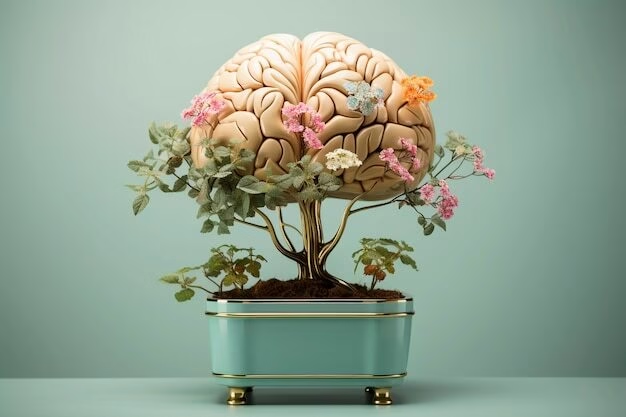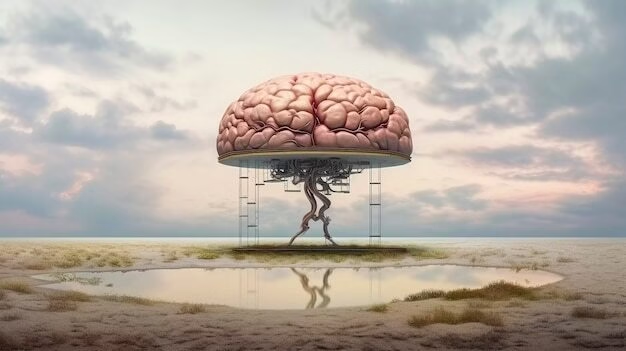The key to personal growth, success, and continuous improvement lies in one fundamental concept: the growth mindset. Embracing this mindset is not just about achieving a goal but about transforming the way you approach challenges, failures, and learning itself. It’s about viewing every obstacle as an opportunity to grow and recognizing that your abilities and intelligence are not fixed but can be developed over time.
In today’s fast-paced world, the ability to adapt, learn new skills, and improve continuously is more important than ever. Whether you’re a student striving for academic success, a professional aiming to climb the career ladder, or someone looking to make personal changes in your life, cultivating a growth mindset is the first step toward achieving lifelong learning and success. In this article, we’ll explore growth mindset techniques, lifelong learning strategies, and the benefits of developing a growth mindset, as well as how to shift your mindset for learning success.
1. Growth Mindset Techniques: The Foundation of Success
The concept of a growth mindset was popularized by psychologist Carol Dweck in her research on learning and intelligence. Dweck identified two main types of mindsets:
- Fixed mindset: The belief that intelligence and abilities are static and unchangeable.
- Growth mindset: The belief that intelligence and abilities can be developed with effort, persistence, and learning.
If you’re looking to cultivate a growth mindset, it’s essential to incorporate techniques that encourage development, resilience, and a positive outlook on learning. Here are some proven techniques that will help you develop a growth mindset:
a. Embrace Challenges
One of the hallmarks of a growth mindset is the ability to embrace challenges. Instead of avoiding difficult tasks or shying away from things that make you uncomfortable, try to see challenges as opportunities to improve and learn. When you face challenges head-on, you’re forced to stretch beyond your current abilities and develop new skills.
For example, if you’re learning a new skill like coding or speaking a foreign language, you might face moments of frustration. A fixed mindset might tell you that you’re not cut out for it, but a growth mindset will encourage you to see mistakes as part of the learning process. The more you push through challenges, the more you grow.
b. Learn from Criticism
Feedback, whether positive or negative, is an invaluable tool for growth. Instead of taking criticism personally or viewing it as a reflection of your abilities, a growth mindset encourages you to see it as constructive. Take the time to reflect on feedback and use it to improve. Ask yourself: What can I learn from this? How can I do better next time?
For instance, in the workplace, receiving feedback from a supervisor on a project can feel daunting, but it’s an opportunity to sharpen your skills and understand areas where you can improve. Embracing feedback as part of your learning journey helps you continuously evolve and adapt.
c. Celebrate Effort, Not Just Results
In a growth mindset, effort is seen as a key component of success. Rather than focusing solely on the end result, celebrate the effort and the hard work you put in along the way. Recognize that success comes from persistence, not just from innate talent or natural ability. When you praise the effort, you reinforce the idea that improvement comes from learning and perseverance, not from a fixed set of abilities.
For example, if you’re working toward a fitness goal, celebrate the effort you put into your training, regardless of whether you’ve reached your final destination yet. The more you recognize effort as an important part of the process, the more motivated you’ll be to keep pushing forward.
d. Develop Resilience in the Face of Setbacks
Setbacks are inevitable on the journey toward growth, but it’s how you handle them that makes all the difference. Rather than viewing failures as evidence of your inability, see them as opportunities to learn and improve. In a growth mindset, setbacks are a natural part of the process and can help you build resilience.
When you experience failure, ask yourself: What can I learn from this? How can I improve next time? By approaching setbacks with curiosity rather than frustration, you’ll find that they can become powerful tools for your personal development.
2. Lifelong Learning Strategies: Staying Curious and Open to Growth
Lifelong learning is the continuous, voluntary pursuit of knowledge and skills for personal or professional development. In today’s world, where information is constantly evolving, it’s more important than ever to remain open to learning throughout your life. A growth mindset fosters a natural inclination toward lifelong learning. Here are some strategies to integrate lifelong learning into your daily life:
a. Adopt a Learner’s Attitude
The first step toward lifelong learning is adopting a learner’s attitude. This involves having a genuine curiosity and openness to acquiring new knowledge, regardless of your age or stage in life. Cultivate an attitude that is excited about learning and sees every experience as a potential lesson.
Start by asking questions: How can I improve? What new skills can I learn? Be proactive about seeking out new experiences and knowledge, whether that’s through books, online courses, or learning from others.
b. Set Personal Learning Goals
Setting personal learning goals is an effective way to stay focused on your lifelong learning journey. Just as you would set goals for a specific project or task, establish goals for the new skills you want to learn or the knowledge you want to acquire. These goals give you direction and purpose in your learning process.
For example, you might set a goal to read a certain number of books each year, take an online course in a field that interests you, or improve your proficiency in a foreign language. Regularly track your progress to stay motivated and accountable.
c. Create a Learning Routine
Lifelong learning thrives when it becomes a consistent part of your daily life. Create a learning routine that fits into your schedule. This could involve setting aside time each day to read, watch educational videos, take an online class, or practice a new skill. The key is consistency—by making learning a regular part of your day, you ensure that you’re always growing.
d. Leverage Technology
With the advent of online platforms and digital resources, there’s never been a better time to engage in lifelong learning. Use technology to your advantage by enrolling in online courses, participating in webinars, or listening to podcasts related to your interests. Technology makes learning more accessible, allowing you to learn at your own pace, on your own terms, wherever you are.
3. Developing a Growth Mindset: Transform Your Approach to Learning
Developing a growth mindset isn’t a one-time event; it’s an ongoing process that requires consistent effort and reflection. Here are steps to actively develop and strengthen your growth mindset:
a. Challenge Limiting Beliefs
The first step in developing a growth mindset is to identify and challenge any limiting beliefs you may have. These are the negative thoughts or beliefs that tell you that you’re not capable of learning or improving. For example, you might believe that you’re “just not good at math” or that you “can’t learn new technology.” These thoughts are rooted in a fixed mindset, and they prevent you from embracing your full potential.
Once you identify these limiting beliefs, actively work to replace them with empowering thoughts. Instead of thinking, “I’m terrible at math,” tell yourself, “I can improve my math skills with practice.” By challenging these limiting beliefs, you begin to reframe your approach to learning.
b. Surround Yourself with Growth-Oriented People
The people you surround yourself with play a huge role in shaping your mindset. To develop a growth mindset, seek out individuals who have a growth-oriented perspective. These people see challenges as opportunities, embrace learning, and encourage you to do the same.
Being around people who are also committed to growth helps reinforce your own commitment to lifelong learning. They provide motivation, encouragement, and inspiration, which will help you maintain your focus and positivity on your journey.
c. Practice Self-Reflection
Self-reflection is a critical tool for developing a growth mindset. Take time regularly to reflect on your learning experiences. What did you learn today? What challenges did you face? How can you improve? Self-reflection helps you identify areas of improvement and reinforces the belief that you can always learn and grow.
d. Embrace the Learning Process
Finally, remember that learning is a journey, not a destination. Embrace the process of learning, even when it’s slow or difficult. The more you focus on enjoying the process rather than just the outcome, the more you’ll be motivated to keep growing and developing.
4. Benefits of Growth Mindset: Unlock Your Potential
- Increased resilience: You’ll be better equipped to handle setbacks and challenges, seeing them as opportunities for growth.
- Improved performance: Embracing a growth mindset leads to better performance in learning, problem-solving, and personal development.
- Enhanced creativity: When you believe that you can improve through effort and learning, you’re more likely to take creative risks and explore new ideas.
- Greater satisfaction: The more you grow and learn, the more satisfied you’ll feel with your personal development and progress.
5. Mindset Shift for Learning Success
Making the mindset shift from fixed to growth-oriented thinking can be transformative. It changes how you approach challenges, failures, and successes. By continuously focusing on effort, learning, and improvement, you’ll be able to unlock your full potential and embrace a lifetime of learning and growth.
Start today: Embrace a growth mindset and begin your journey toward personal growth, continuous learning, and lifelong success.


